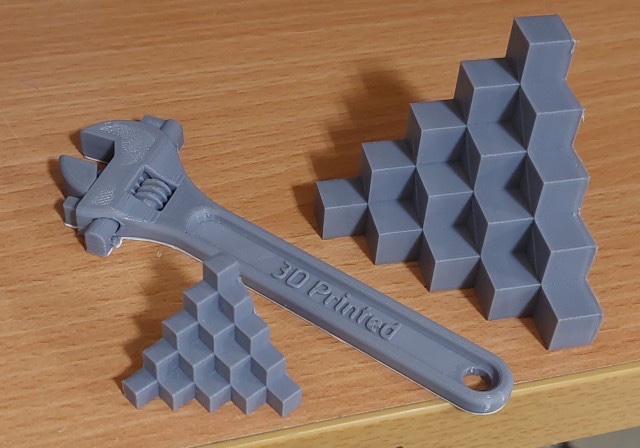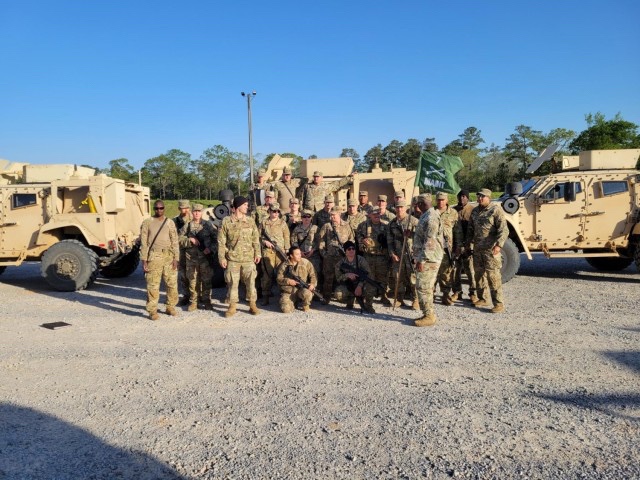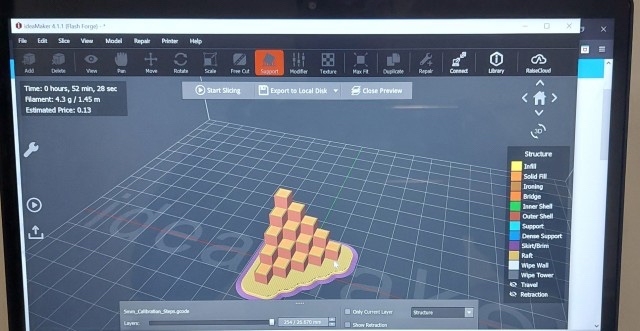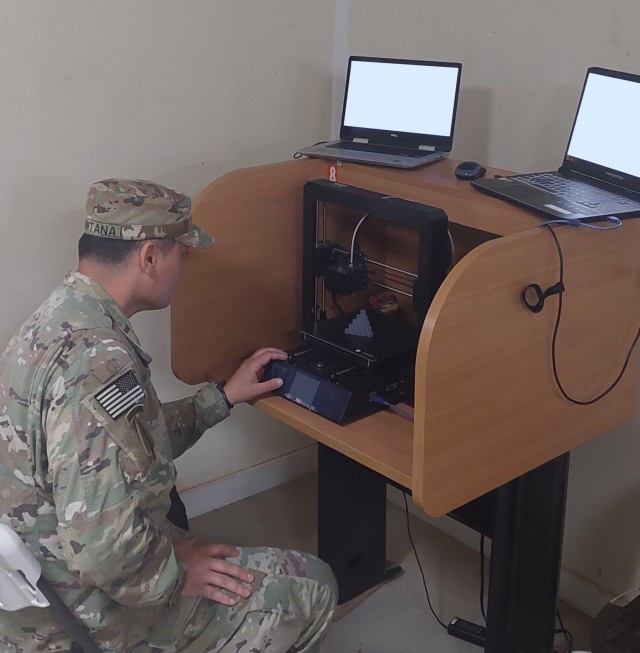
ABERDEEN PROVING GROUND, Md. — On a battlefield in the future, Soldiers deployed to remote areas around the world will use sophisticated additive manufacturing printers to ‘print’ virtually everything they need, from food to shelter to weapons. The Army has made additive manufacturing a priority and Combat Capabilities Development Command, or DEVCOM, is supporting the effort with Project Prime, a collaboration with U.S. Army Special Forces and an international industry partner.
The Project Prime team consists of the U.S. Army 7th Special Forces Group (Airborne), or 7th SFG (A); DEVCOM’s International Technology Center — United Kingdom, or ITC-UK; DEVCOM’s Command, Control, Communications, Computers, Combat systems, Intelligence, Surveillance and Reconnaissance Center, or C5ISR; and Defend3D, a company based in the United Kingdom that enables secure transmission of remote 3D printing.

Special Forces Soldiers tested the technology by repeatedly adding and printing additive manufacturing files using Defend3D’s Virtual Inventory Communication Interface, or VICI. VICI provides a server application that manages the virtual inventory, assigns rights to remote manufacturers and provides the product in a ‘one-click-print’ format with minimal training for the end-user to securely stream.
“Despite a network connection categorized commercially as having low to no connection, VICI facilitated speedy, secure and accurate printing. Based on expectations set at the beginning of the project, VICI did everything we needed it to do, and 7th SFG (A) was satisfied with the system performance and endorsed the capability for further development and implementation,” said Dr. Patrick Fowler, DEVCOM Global Technology advisor at ITC-UK.

Each DEVCOM ITC has a Global Technology advisor who scouts technology in their area of operation. Project Prime began when a DEVCOM global technology advisor was scouting additive manufacturing technology in the Atlantic region, which includes London, United Kingdom; Paris, France; Frankfurt, Germany; and Tel Aviv, Israel. The ITCs, which are part of DEVCOM’s global enterprise, serve as the forward-deployed ‘eyes and ears’ of the Army Science and Technology Enterprise. Other DEVCOM ITCs include: North America; South America; Northern Europe; Southern Europe; Northeast Asia; Southeast Asia and the Southern Hemisphere.
VICI ensures end-to-end encryption by enabling organizations to store their designs locally and use the virtual inventory to manufacture parts in remote locations. For example, a deployed Soldier communicates a need, such as a spare part or a modification to an existing part, to the computer-aided design, or CAD, element at 7th SFG (A). The CAD element either designs the part from scratch or selects from a database of commonly used parts. This is then streamed to the Soldier in the field, who prints the part. Because the file is never sent, VICI prevents adversaries from accessing the information and identifying vulnerabilities in equipment and capabilities.
“We made it a priority to pursue avenues that will allow us to operate in environments that are not conducive to regular resupply efforts. For detachments to stay in the fight in these environments, we explored systems that operate outside the conventional supply chains. Project Prime’s deployable 3D printer and VICI software enables secure transmission and an easy-to-use interface,” said Chief Warrant Officer 2 Jesse Peters, Innovation Cell, 7th SFG (A).

Other benefits of the technology include:
The 3D printer operator does not need to be an expert in 3D printing to print the required files.
The interface prevents overloading the network since forward-deployed Soldiers only see objects they have requested for their mission.
It securely stores files in a sharable repository, including files created by the Department of Defense and coalition networks.
“Imagine this scenario — a clever Green Beret on a remote base develops a novel attachment for an existing Unmanned Aircraft System, which is stored in VICI. Then, a clever Airman across the world at a remote airfield sees it and adds his/her twist. Next, a British Soldier prints it and starts using it in his/her own operations,” Fowler said.
During the training event, feedback was gathered in real-time as the deployed Soldiers communicated with the 7th SFG (A) Innovation Cell. Other information was collected after the training, including the pros and cons of the system, software interface, training requirements and long-term durability.
7th SFG (A) plans to train more of their Soldiers on the technology to support a U.S. Army Southern Command deployment. Once the deployment is completed, ITC-UK will document all of the activities and achievements of Project Prime and make it available to the broader Department of Defense community. The information will benefit other DEVCOM centers and research laboratory, particularly the C5ISR Center, which focuses on securing communications to the tactical edge. The technology may also fill gaps with other Army units.
“We’re looking for funding to further develop VICI to make it operable on a cell phone or a small device, including a Raspberry Pi, which is a very small computer that plugs into a computer monitor, TV, or similar small end-user devices. This will make the solution, which is currently used on a laptop, even more deployable,” Fowler said.
By Argie Sarantinos, DEVCOM HQ Public Affairs


The Army had this Capability 2 years ago before we got rid of the Rapid Equipping Force (REF) it had EXLABs that could fabricate almost anything you could come up with with forward deployed labs and one CONUS.